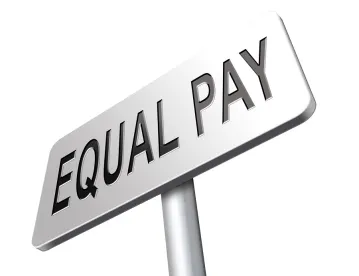Pay equity among men and women has been a “front and center” topic for years. President Obama made it one of the high priorities for his administration and signed the Lilly Ledbetter Fair Pay Act as his first piece of legislation in 2009. While the issue and its surrounding policies are nothing new today (nor were they in 2009), it is still leaving employers scratching their heads and is a fitting topic for the next letter up in our Letter of the Law Series, the letter E.
The most pressing topic in pay equity policy is whether employers should be required to submit employee pay data to the government. Large employers (typically those with 100 or more employees) have for years been required to submit workforce information to the EEOC – namely, the gender, race, and ethnic makeup of employees by job category. While the reports are confidential, the EEOC uses the information to learn more about women and minority workforces and to enforce civil rights laws. In 2016, the EEOC swiftly turned heads when it amended EEO-1 reporting rules to require employers to submit not only protected class details but also W-2 earnings data and hours worked for their employees. The intent of the change was clear – to allow the EEOC to enforce gender discrimination laws and to investigate pay discrimination charges.
The 2016 rule was only set to go into effect in March of this year, but the Office of Management and Budget put a halt to that last year. As with most contentious government actions taken these days, litigation ensued and employers were left wondering what would happen. No final decision has been made, and as of today, the rule still has not been implemented. Nonetheless, EEOC officials have indicated that some pay data may be required even under the current administration. Further, it appears that not all employers are off the hook, as some states have stepped into the fray. California legislators proposed a bill requiring large employers in California to report pay data to the state’s labor agency using a form modeled after the revised EEO-1 form. The bill was passed in response to the halting of the federal rule, so California employers might see this bill advance quickly.
Not only is pay reporting shaping the issue of pay equity, but states are laying the groundwork for higher standards in equal pay laws. The federal Equal Pay Act requires employers to explain pay disparities with non-discriminatory factors such as merit, seniority, or production quality or quantity. A key question is which jobs should be compared – the federal standard is whether the workers perform “equal work” requiring “equal skill, effort, and responsibility.” A majority of states have their own mini-equal pay laws, several of which expand upon the federal “equal work” standard. These laws impose a less exacting standard and would allow employees to compare their own positions to a wider variety of co-workers. A few examples include:
- California’s Equal Pay Act, comparing employees who perform “substantially similar work.”
- Massachusetts Equal Pay Act, prohibiting pay differences for “comparable” or “substantially similar” work.
- Maryland’s Equal Pay for Equal Work Act, requiring pay equity where employees “perform work of a comparable character” in the same county within the state.
As the true meaning of these standards will certainly be developed in the courts, state laws also look for other ways to promote pay equity within their states. New Jersey’s Pay Equity Act went into effect on July 1 and imposes more severe monetary penalties for violations and prohibits retaliation against employees who discuss or disclose pay information.
The one thing that’s clear from pay equity laws and regulations: this debate is nowhere near settled. Government at varying levels agree that pay disparity must be remedied but disagree as to the best means of doing so. We’ll continue to watch these updates – and I will see you soon for Letter F!



 />i
/>i
